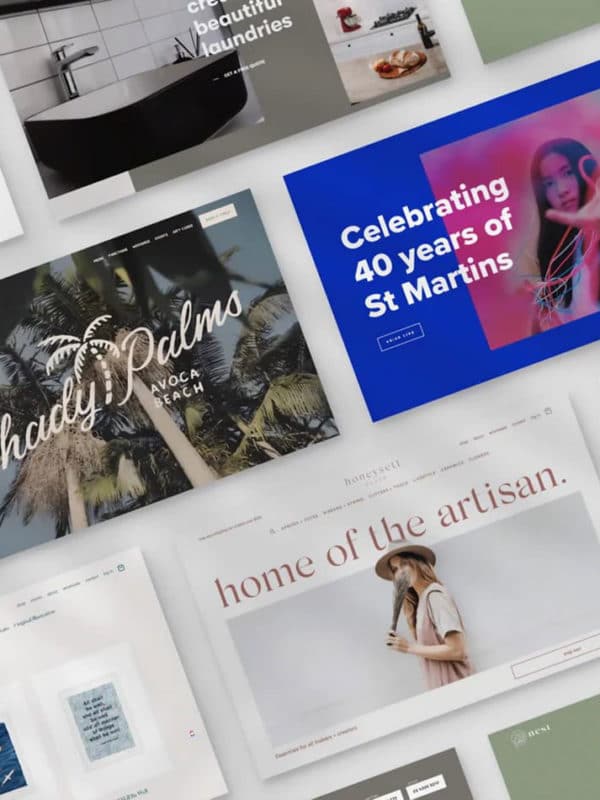Whether you’re operating a local small business or a global organisation, your ability to make your products and services stand out from your competitors can have a significant impact on your bottom line and value of your company overall!
Differentiation, as the name suggests, means distinguishing your product or service from competitors in the market. In this way, your organisation creates a unique personality in the eyes of your audience. Get creative! How can you make your business break out from the pack?
If you’re trying to brainstorm where your uniqueness can come from, some common means of differentiation include:
- product-based features
- service-based features
- channels of distribution
- personal relationship building
- reputation
- price
A great example of Service differentiation is Maccas! Their business thrives due to their focus on honing their Service Differentiation. They are always innovating their ordering and delivering strategy, as well as keeping their staff trained in high-quality customer service. When they introduced the self-serve kiosks back in 2015, they made a clear message that they cared about getting your food to you quickly and efficiently!
So, what does your business stand for?
Valuable brands are so because they make a concentrated effort to stand for something. Because of this, they are then recognised by their target audience for it, and they continue a back and forth communication of a shared value system between business and audience.
Innovation and brand experience
These two methods have proven to be critical factors driving performance according to the latest research on the top brands in Australia. Those perceived as highly innovative are growing on average 10% faster than brands with a lower score, and high-scoring Brand Experience performers are seeing a 9% improvement in value.
Sometimes, simply staying relevant to existing audiences and attracting new ones may be your primary form of innovation. You might aspire to be a leader in your category and be seen to take risks and be creative. According to the research, perceived innovation is by far the largest driver of brand growth in Australia, driving growth at 10 times the rate of any of the other factors like purpose, communication, and experience.
In 2019, one research company determined that the two top creative brands in Australia were Westfield and Bundaberg.
Shopping Centre Giant, Westfield, is seen to be redefining what a shopping centre should be, focusing on the integration of fashion, food, leisure and entertainment experiences, and striving to curate a retail environment that resonates with the community it serves.
Its “Destination 2028” vision describes a future of shopping malls featuring sensory gardens, waterways, and flying drones. One step towards that vision came with the opening in 2018 of Westfield Coomera, on the Gold Coast. Described by Westfield as the “Living Centre of the Future”, it features a two-level dining and entertainment precinct, and over 40% of total space is dedicated to dining, leisure, and entertainment! It can be clearly seen that Westfield discovered that their point of differentiation is its sheer innovative drive
Providing Experiences
While brand experience in the past was mostly shaped by face-to-face communication, now the focus has shifted towards digital platforms! To compete, businesses have to concentrate on all things digital to establish a strong branding experience. This is commonly done through websites and social media platforms.
Tools and processes are integral to success in brand experience – such as having the right technology and doing search engine optimisation – along with true quality content. For instance, your website should engage with target audiences, support current users, and convert new visitors. It must be regularly updated and improved so you can provide the best user experience possible every time.
While free samples, competitions, gaming, and videos are all great ways to build relationships with target audiences online, connecting online is also about sharing. Because, you know your customers are probably on a variety of social media networks, sharing their views and experiences – join in on the conversation!
To capture the benefits of social media platforms it’s necessary to plan campaigns, engage in discussion, direct conversations towards your website, capture user information, and drive support through user-generated content. Examples of user-generated content could include stories, comments, blogs, images, and videos!
The Adobe Experience Index for 2019 showed that consumers in Australia and New Zealand are leading the world in customer experience expectations due to an explosion of online businesses in the region, which has given consumers more choice than ever before.
The Global Index found that seamless and personalised experiences are key to keeping customers happy. Seventy-nine percent of Australian/New Zealand consumers now demand tailored experiences from organisations and 66% are happy to have completely automated interactions – if done well.
The survey shows that if these expectations are not met, the businesses’ bottom line could be impacted! With almost half of all online shoppers (48%) saying they have abandoned their online shopping carts due to a poor customer experience; the results say it all.
Becoming the Leader
For smaller businesses, the idea of competing with brand behemoths like Bunnings, Zara or even Arnotts can seem overwhelming. However, there are effective ways to continue communicating your value proposition to cut through the noise and be heard.
One way is to focus on a key set of customers that can help drive your business and provide them with exactly what they want in a way that surpasses your competition! There is no substitute for having enthusiastic advocates spreading the word about your business to others.
For those without that elusive million-dollar marketing budget, another way to build brand awareness is through becoming a thought leader with your desired audiences – making an intelligent and meaningful contribution to your community, either through content marketing or in-person events.
Content marketing can work on numerous levels. It gives you the opportunity to provide your audiences with timely and helpful information. Business and specialist publishers have been using this technique successfully for years – providing rich content on niche topics to controlled audience groups.
For instance, if your customers are looking for renovation ideas and want to understand the relative benefits of using one construction method over another, you can provide them with just enough information to provide value and leave a lasting impression which is, of course, seamlessly connected to your brand voice!
Part of this lasting impression is about building trust. Some would say it’s fundamental to establishing a strong brand. This is where we come back to the theme of ‘standing for something’, whether it’s the environment, championing young people, equality, humanitarian causes or even just taking in life’s little treasures.
“Whatever a brand says it believes, it must keep its promises all the time if it is to retain trust. The public has a finely tuned ear for pledges that turn out to be hollow,” according to BrandZ™.
But trust is not just about whether a customer will buy a brand but rather the value of recommendation with their friends, family, and peers. People don’t make recommendations of brands that they unless they have full trust that their recommendation won’t come back to bite them on the behind. No one likes to lose face in front of their parents in law.
So if you’re looking at not just building a business, but looking to make a genuine and lasting impression, understanding how creating concentrated efforts to find your unique thumbprint by exercising differentiation on your products or services is the name of the game.







